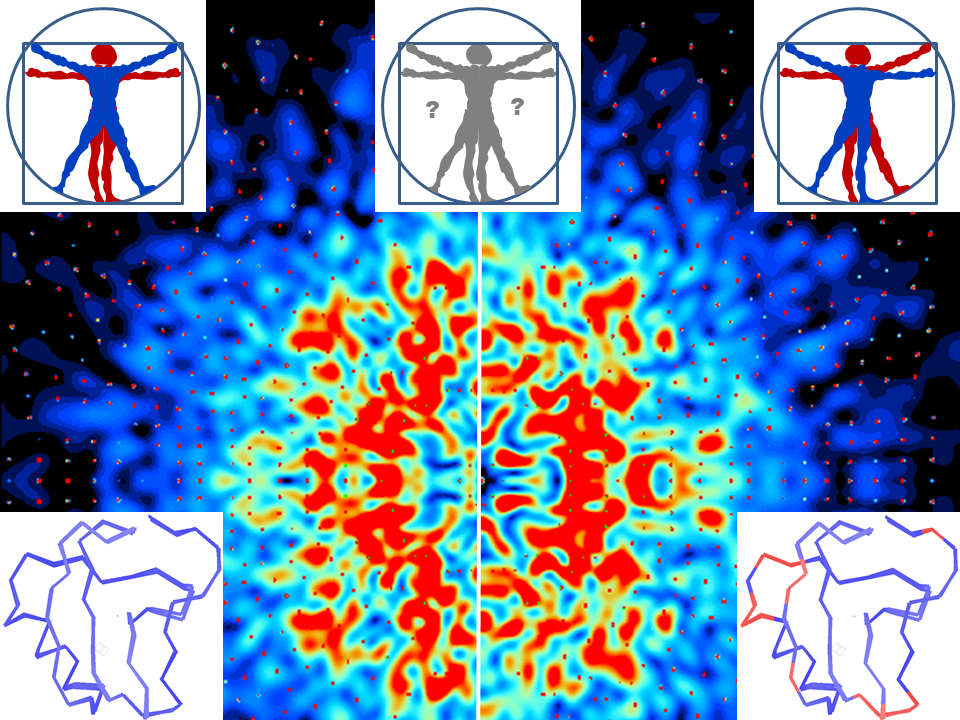The DaVinci Dude Dance

This is a calculated diffraction pattern in false-color intensity (red is bright, black is dark). Upper insets represent two different dance moves, both of which could be represented by the Vitruvian Man, but the coordinated motions are lost if all you have is the time-averaged image in black-and-white (middle inset). Bottom insets are backbone traces of the actual protein molecules used to calculate the diffraction. The tiny little specks peppering the image are the Bragg spots, which define the average appearance of the molecule over time. Almost everything we know about atoms comes from Bragg data. All that stuff in between the Bragg spots is the Diffuse Scatter, and it tells us how the atoms dance.
The pattern on the left side corresponds to a particular 2-state molecular motion that is too subtle to see without zooming in. The pattern on the right has all the atoms in the same positions, but at different times. Regions colored in red have the opposite direction that they do on the left. Just like your arms do if you are doing jumping jacks vs doing “The Wave”.
The two diffuse patterns are similar, but clearly different. A major goal of the diffUSE project is to get the weak signal of diffuse scatter measured clearly enough to be analyzed unambiguously in this way.
Script for converting a two-conformer pdb file into diffuse scatter data.
